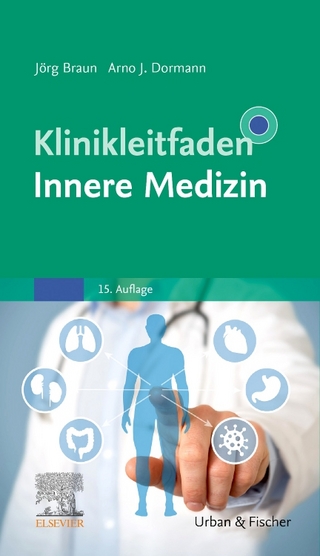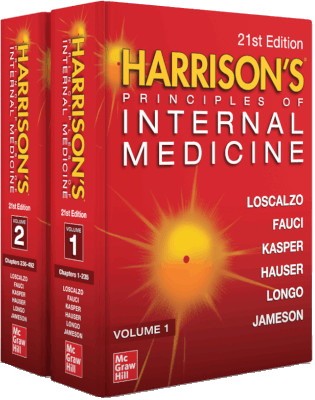
The Year in Metabolism 1975-1976
Kluwer Academic/Plenum Publishers (Verlag)
978-0-306-32001-9 (ISBN)
- Titel ist leider vergriffen;
keine Neuauflage - Artikel merken
1 Hormone Receptors, Cyclic Nucleotides, and Control of Cell Function.- 1.1. Introduction.- 1.2. Receptor Systems.- 1.2.1. General Regulatory Mechanisms and Kinetics.- 1.2.1.1. Physiological Regulation of Receptors.- 1.2.2. Opiate Receptors.- 1.2.2.1. Endogenous Peptides Active at the Opiate Receptor.- 1.2.3. ?-Adrenergic Receptors.- 1.2.3.1. Regulation of ?-Andrenergic Receptors.- 1.2.4. Calcitonin Receptors.- 1.2.5. Parathyroid Hormone Receptors.- 1.2.6. Vasopressin Receptors.- 1.2.7. Insulin, Nonsuppressible Insulinlike Activity, Somatomedin, Nerve Growth Factor, and Epidermal Growth Factor Receptors.- 1.2.7.1. Insulin and Nonsuppressible Insulinlike Activity Receptors.- 1.2.7.2. Somatomedin, Nerve Growth Factor, and Epidermal Growth Factor Receptors.- 1.2.8. Metabolic Defects Involving Receptors.- 1.2.8.1. Receptor Deficiency.- 1.2.8.2. Immunopathic Receptor Disorders.- 1.3. Regulation of Adenylate Cyclase.- 1.3.1. General.- 1.3.2. Guanine Nucleotides and Regulation of Adenylate Cyclase.- 1.3.3. Toxins.- 1.4. Cyclic 3?,5?-Adenosine Monophosphate Concentration in Tissue and Protein Kinase Activation.- 1.4.1. General.- 1.4.2. Protein Kinases.- 1.4.3. Regulation of Cyclic Nucleotide Phosphodiesterase Activity.- 1.4.3.1. Cyclic Nucleotide Phosphodiesterase in the Physiology of Vision.- 1.5. Cyclic Nucleotides in the Extracellular Fluids.- 1.5.1. General.- 1.5.2. Plasma Cyclic Nucleotides-Production Rates and Clearance.- 1.5.3. Cyclic 3?,5?-Adenosine Monophosphate in Cerebrospinal Fluid.- 1.5.4. Urinary Excretion of Cyclic 3?,5?-Adenosine Monophosphate.- 1.5.5. Parathyroid Hormone and Renal Clearance of Cyclic 3?,5?-Adenosine Monophosphate.- 1.5.5.1. Pseudohypoparathyroidism.- 1.5.6. Other Factors and Hormones That Affect Urinary Cyclic 3?,5?-Adenosine Monophosphate Excretion.- References.- 2 Diabetes Mellitus.- 2.1. Introduction.- 2.2. Heterogeneity in Etiology and Pathogenesis.- 2.2.1. Heterogeneity of Heredity.- 2.2.1.1. Patterns of Inheritance.- 2.2.1.2. Histocompatibility Typing.- 2.2.1.3. Twin Studies.- 2.2.1.3a. Prevalence of Diabetes.- 2.2.1.3b. HLA Typing.- 2.2.1.4. Autoimmunity.- 2.2.2. Environmental Factors.- 2.2.2.1. Viral Factors-Multiple.- 2.2.2.2. Nutritional Factors.- 2.2.3. Insulin Secretion.- 2.2.3.1. Heterogeneity of Insulin Responses to Glucose in the Maturity-Onset Type of Diabetes.- 2.2.3.2. Insulin Resistance.- 2.2.3.2a. In Vivo.- 2.2.3.2b. In Vitro-Receptor-Binding Studies.- 2.2.3.3. Glucose Receptors-d-Glucose Anomers.- 2.2.4. Glucagon Secretion-Somatostatin.- 2.3. Measurement of Insulin Secretory Products.- 2.4. Acute Complications.- 2.4.1. Ketoacidosis.- 2.4.1.1. Low-Dose Insulin Treatment.- 2.4.1.2. Bicarbonate Therapy.- 2.4.1.3. 2,3-Diphosphoglycerate and Phosphate Therapy.- 2.4.2. Alcoholic Ketoacidosis.- 2.4.3. Lactic Acidosis.- 2.5. Long-Term Complications.- 2.5.1. Diabetic Neuropathy.- 2.5.2. Accelerated Aging.- 2.5.3. Diabetic Microangiopathy.- 2.5.3.1. Basement Membrane Thickening.- 2.5.3.2. Diabetic Glomerulosclerosis.- 2.5.3.2a. Human.- 2.5.3.2b. Experimental.- 2.5.3.3. Diabetic Retinopathy and Intravascular Factors.- 2.5.4. Evidence for Heterogeneity.- 2.5.5. Changes in Hemoglobin Components.- 2.5.5.1. Changes in Concentration of Hemoglobin Alc.- 2.5.5.2. Changes in Concentration of 2,3-DPG.- References.- 3 Glucagon.- 3.1. Immunoreactive Glucagon in Tissues and Plasma.- 3.1.1. Primary Structure of Glucagon.- 3.1.2. Biosynthesis.- 3.1.3. Plasma Immunoreactive Glucagon.- 3.1.4. Tissue Immunoreactive Glucagon.- 3.2. Glucagon Metabolism-Clearance and Degradation.- 3.3. Actions of Glucagon on the Liver.- 3.3.1. Glucagon and Hepatic Glucose Production.- 3.3.2. Glucagon and Ketogenesis.- 3.4. Physiological Roles of Glucagon and Insulin in Fuel Homeostasis-The Concept of a Bihormonal Unit.- 3.5. Proposed Mechanisms of Glucagon Action.- 3.5.1. Glucagon and Its Receptors.- 3.5.2. Mechanism of Adenylate Cyclase Activation.- 3.6. Control of Glucagon Secretion.- 3.6.1. Glucose.- 3.6.2. Amino Acids.- 3.6.3. Free Fatty Acids.- 3.6.4. Cyclic 3?,5?-Adenosine Monophosphate.- 3.6.5. Hormones.- 3.6.6. Sympathetic Nerves.- 3.6.7. Exercise.- 3.6.8. Severe Stress.- 3.6.9. Acetylcholine.- 3.6.10. Calcium.- 3.6.11. Somatostatin.- 3.7. Studies of Glucagon Physiology Using Somatostatin.- 3.8. Microanatomical Organization of the Islets of Langerhans.- 3.8.1. Functional Subdivisions of the Islets and the Role of the Insular D-Cell.- 3.8.2. Ultrastructural Features of Islet Cells.- 3.8.2.1. Exocytosis.- 3.8.2.2. Tight Junctions.- 3.8.2.3. Gap Junctions.- 3.9. Extrapancreatic Glucagon.- 3.9.1. Morphological and Biochemical Studies.- 3.9.2. Gastric Glucagon Secretion.- 3.10. Diabetes Mellitus.- 3.10.1. A-Cell Function in Human Diabetes.- 3.10.2. The Bihormonal Abnormality Hypothesis.- 3.10.3. Evidence Against the Bihormonal Abnormality Hypothesis.- 3.10.4. Mechanism of Diabetic Hyperglucagonemia in Man.- 3.11. A-Cell Function in Prediabetes.- 3.12. Catabolic Diseases.- 3.13. Glucagonoma.- References.- 4 Recent Developments in Body Fuel Metabolism.- 4.1. Introduction.- 4.2. Glucose Metabolism.- 4.2.1. Glucose Disposal.- 4.2.2. Insulin-Glucagon Interaction in Glucose Disposal.- 4.3. Protein and Amino Acid Metabolism.- 4.3.1. Protein Feeding and Repletion of Muscle Nitrogen.- 4.3.2. Amino Acid Output from Muscle in the Fasting State.- 4.4. Fatty Acid and Ketone Metabolism.- 4.4.1. Substrate and Enzymatic Factors in Ketogenesis.- 4.4.2. Hormonal Regulation of Ketogenesis.- 4.4.3. Ketone Accumulation in Starvation.- 4.4.4. Ketone-Alanine Interactions.- 4.5. Fuel Metabolism in Exercise.- 4.5.1. Brief and Prolonged Exercise in Normal Subjects.- 4.5.2. Exercise in Diabetes Mellitus.- References.- 5 Recent Endocrine and Metabolic Investigations Relevant to Obesity.- 5.1. Introduction.- 5.2. Insulin.- 5.2.1. Carbohydrate Resistance in Obesity.- 5.2.2. Studies on Insulin Receptors.- 5.2.3. Insulin as a Controller of Appetite and Hunger.- 5.3. Thermogenesis and Thyroid Function.- 5.4. The Gastrointestinal Tract.- 5.4.1. Jejunoileal Shunts.- 5.4.2. Cholecystokinin and Satiety.- 5.5. Appetite and Substrate Utilization.- 5.5.1. Protein-Sparing and Ketogenic Diets.- 5.5.2. Inhibition of Fatty Acid Synthesis.- References.- 6 Disorders of Lipid and Lipoprotein Metabolism.- 6.1. Introduction.- 6.2. Lipoprotein Structure and Metabolism.- 6.2.1. Introduction.- 6.2.2. Very-Low-Density Lipoproteins.- 6.2.3. Low-Density Lipoproteins.- 6.2.4. High-Density Lipoproteins.- 6.3. Hyperlipidemias-Definition and Classification.- 6.3.1. "Normal" Levels of Plasma Lipids.- 6.3.2. Classification by Lipid Elevation.- 6.3.3. Classification by Type of Hyperlipoproteinemia.- 6.3.4. Genetic Classification.- 6.4. Familial Hypercholesterolemia.- 6.4.1. Introduction.- 6.4.2. Pathogenesis.- 6.4.3. Diagnosis and Classification.- 6.4.4. Portacaval Shunt Surgery and Homozygous Familial Hypercholesterolemia.- 6.4.5. Other Therapy.- 6.5. Type III Hyperlipoproteinemia.- 6.6. Familial Lecithin: Cholesterol Acyltransferase Deficiency.- 6.7. Chronic Renal Failure and Hyperlipidemia.- 6.8. Diabetes Mellitus and Hyperlipidemia.- 6.9. Treatment of Hyperlipidemia.- 6.9.1. Diet.- 6.9.2. The Coronary Drug Project.- 6.9.3. Primary Prevention of Ischemic Heart Disease.- References.- 7 Metabolism of Amino Acids and Organic Acids.- 7.1. Introduction.- 7.2. Hyperammonemia and Urea Cycle Enzymes.- 7.2.1. Ammonia Formation and Removal.- 7.2.2. Ammonia Intoxication.- 7.2.3. Biochemical and Clinical Variations in Ornithine Transcarbamylase Deficiency.- 7.2.4. Possible Modes of Successful Therapy for Severe Ornithine Transcarbamylase Deficiency.- 7.2.5. Pathogenesis of Hyperammonemia in Reye's Syndrome.- 7.3. Inherited Defects of Cobalamin (Vitamin B12) Metabolism.- 7.3.1. Genetic Control of Vitamin Metabolism.- 7.3.2. Enumeration and Characterization of Specific Inherited Defects.- 7.3.3. Cobalamin Supplementation as Therapy-Some Caveats.- 7.3.4. Prenatal Diagnosis and Treatment of Methylmalonicacidemia.- 7.4. Use of Stable Isotopes in the Investigation of Disorders of Amino Acid and Organic Acid Metabolism.- 7.4.1. Stable Isotopes.- 7.4.2. Advances in Instrumentation: Combined Gas Chromatography-Mass Spectrometry and 13C Nuclear Magnetic Resonance.- 7.4.3. Biohazards.- 7.4.4. Recent Investigations with Stable Isotopes.- 7.4.4.1. [13C]Valine Metabolism in a Patient with Methylmalonicacidemia, Using 13C-NMR -Identification of Propionate as an Obligate Intermediate.- 7.4.4.2. Identification of a Minor Pathway of Isoleucine Metabolism.- 7.4.4.3. Use of Deuterated Phenylalanine and Tyrosine in Studies of Phenylketonuria In Vivo.- References.- (Section 7.1).- Hyperammonemia and Urea Cycle Enzymes (Section 7.2).- Inherited Defects of Cobalamin Metabolism (Section 7.3).- Stable Isotopes (Section 7.4).- 8 Disorders of Purine and Pyrimidine Metabolism.- 8.1. Introduction.- 8.1.1. Role of Gout and Hyperuricemia in Development of New Medical Concepts.- 8.1.1.1. Pathology Produced by Sparingly Soluble Substances.- 8.1.1.2. Concept of Genetic Heterogeneity in Causation of Disease.- 8.1.2. Insight into Cellular and Physiological Mechanisms Revealed by Mutations.- 8.1.2.1. Regulation of Purine Synthesis.- 8.1.2.2. Physiological Consequences of Failure To Repair DNA Damaged by Ultraviolet (UV) Light.- 8.1.2.3. Role of Purine and Pyrimidine Nucleotide Metabolism in Brain Function.- 8.1.2.4. Role of Purine and Pyrimidine Nucleotide Metabolism in Normal Development and Function of the Hematological System.- 8.1.2.5. Role of Purine Nucleoside Interconversion and Pyrimidine Metabolism in the Immune Response.- 8.1.2.6. Purine and Pyrimidine Biosynthesis as a Major Function of Carbon Dioxide Required by Mammalian Cells In Vitro.- 8.1.2.7. Use of Purine and Pyrimidine Mutants in Somatic Cell Genetics.- 8.2. Abnormalities of Purine Metabolism.- 8.2.1. Adenine Phosphoribosyltransferase Deficiency.- 8.2.2. Hypoxanthine-Guanine Phosphoribosyltransferase (HPRT) Deficiency.- 8.2.3. Adenosine Deaminase Deficiency.- 8.2.3.1. Range of Clinical Presentation.- 8.2.3.2. Radiographic Changes.- 8.2.3.3. Genetics.- 8.2.3.4. Enzymology of Adenosine Deaminase.- 8.2.3.5. Changes with Mitogenic Stimulation.- 8.2.3.6. Proposed Pathogenetic Mechanisms.- 8.2.3.7. Therapy.- 8.2.4. Mutations in Phosphoribosylpyrophosphate Synthetase.- 8.2.4.1. Increased Activity of Phosphoribosylpyrophosphate Synthetase.- 8.2.4.2. Decreased Activity of Phosphoribosylpyrophosphate Synthetase.- 8.2.5. Hereditary Xanthinuria from Xanthine Oxidase Deficiency.- 8.2.6. Evidence of Influence of Carbohydrate Metabolism on Purine Metabolism.- 8.3. Abnormalities in Serum Urate Concentration.- 8.3.1. Hyperuricemia.- 8.3.2. Effects of Hyperuricemia on Renal Function.- 8.3.3. Clinical Disorders Associated with Hypouricemia.- 8.3.4. Convenient Clinical Method for Evaluation of Uric Acid Production.- 8.4. Abnormalities of Pyrimidine Metabolism.- 8.4.1. Orotic Aciduria.- 8.4.1.1. Hereditary Orotic Aciduria.- 8.4.1.2. Orotic Aciduria from Defects in Urea Synthesis.- 8.4.1.3. Pharmacologically Induced Orotic Aciduria.- 8.4.2. Pyrimidine 5?-Nucleotidase Deficiency.- 8.4.2.1. Presentation.- 8.4.2.2. Biochemical Features.- 8.4.2.3. Genetics.- 8.4.3. Uridine Monophosphate Kinase Relative Deficiency.- 8.4.4. Carbamyl Phosphate Synthetase Deficiency.- 8.4.5. ?-Aminoisobutyric Acid Excretion.- 8.5. Regulatory Role of Cyclic Purine Nucleotides.- 8.5.1. Cyclic 3?,5?-Adenosine Monophosphate.- References.- 9 What's New-Vitamins and Minerals.- 9.1. Introduction.- 9.2. Vitamin C.- 9.3. Vitamin D.- References.- 10 Nutrition, Growth, and Development.- 10.1. Introduction.- 10.2. Normal Nutrition.- 10.2.1. Nutrition and Cellular Growth.- 10.2.1.1. Specific Nutrient Deficiencies.- 10.2.2. Nutrition and Neurohormones.- 10.2.3. Nutrition and Pregnancy.- 10.2.4. Early Infant Nutrition.- 10.2.5. Nutrition and Muscle Metabolism.- 10.2.6. Interaction of Nutrition and the Endocrine System.- 10.3. Abnormal Nutrition.- 10.3.1. Parenteral Nutrition in Small Infants.- 10.3.2. Nutrition and Physical and Mental Development.- 10.3.3. Childhood Obesity.- 10.3.4. Nutrition and Cancer.- References.- Additional Selected Reading List.- 11 Metabolic Aspects of Renal Stone Disease.- 11.1. Introduction.- 11.2. Types of Renal Stones.- 11.3. Pathogenesis of Renal Stones.- 11.3.1. Basic Mechanisms of Stone Formation.- 11.3.2. Specific Causes of Renal Stone Disease.- 11.3.2.1. Hypercalciuria.- 11.3.2.2. Hyperoxaluria.- 11.3.2.3. Recurrent Urinary Tract Infections.- 11.3.2.4. Hyperuricosuria.- 11.3.2.5. Cystinuria.- 11.3.2.6. Xanthinuria.- 11.3.3. Idiopathic Stone Disease.- 11.4. Treatment and Prevention of Renal Stones.- 11.4.1. General Measures.- 11.4.1.1. Fluids.- 11.4.1.2. Diet.- 11.4.1.3. Urine pH.- 11.4.2. Specific Measures.- 11.4.2.1. Agents That Affect Calcium Excretion.- 11.4.2.2. Agents That Affect Oxalate Excretion.- 11.4.2.3. Agents That Affect Urate Excretion.- 11.4.2.4. Agents That Affect Cystine Excretion.- 11.4.2.5. Inhibitors of Stone Formation.- 11.5. Summary.- References.- 12 Metabolism and Metabolic Actions of Ethanol.- 12.1. Metabolism of Ethanol.- 12.2. The Hypermetabolic State Produced by Ethanol.- 12.3. Effects of Alcohol on the Liver and Development of Alcoholic Liver Injury.- 12.4. Interaction of Ethanol and Lipid Metabolism in Liver and Intestine.- 12.5. Acetaldehyde-Its Metabolism and Metabolic Effects.- References.
| Zusatzinfo | 26 black & white illustrations, biography |
|---|---|
| Sprache | englisch |
| Themenwelt | Medizinische Fachgebiete ► Innere Medizin ► Diabetologie |
| Medizinische Fachgebiete ► Innere Medizin ► Endokrinologie | |
| Studium ► 1. Studienabschnitt (Vorklinik) ► Biochemie / Molekularbiologie | |
| ISBN-10 | 0-306-32001-0 / 0306320010 |
| ISBN-13 | 978-0-306-32001-9 / 9780306320019 |
| Zustand | Neuware |
| Haben Sie eine Frage zum Produkt? |
aus dem Bereich


